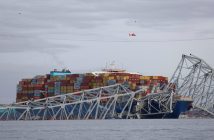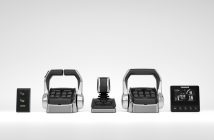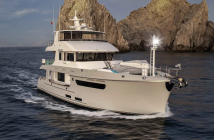This is a down-and-dirty topic but fuel-water separators in your boat’s fuel lines are without doubt your first and most important line of defense in the war against contaminated diesel fuel. This is particularly true of you are cruising away from your home fuel dock and taking on diesel of unknown purity.
Water in your fuel can come from several sources. First, it may be in the fuel dock’s own tanks that may have a leak or may not be well insulated and thus can sweat condensation in humid conditions
Or, your own on-board metal tanks can sweat moisture from the air inside the tank during temperature swings and high humidity. This often affects boats that are stored for the winter and have not had the tanks topped off before hand. Moist air in a tank is your enemy.
Water in the fuel in small quantities will cause the engine to blow white exhaust. In larger quantities, water can foul an injector fuel pump or even foul an injector.
In the tank itself, water will foster the birth of diesel bugs or the algae that mysteriously appears in an otherwise toxic environment. Left untreated, diesel algae can become a real problem for both your tanks and the engine itself.
A fuel water separator is the answer for it will clean the fuel before it gets to the fine filter and then the injector pump. And, because unburned diesel in the fuel system recirculates back to the tank, the fuel supply is constantly being filtered while the engine is running.
Not all fuel filters and fuel-water separators are alike so knowing how they work and what options are availablewill help you make the right decision on the best filters for your boat.
Here’s an in-depth look at the subject on the BoatUS blog.




